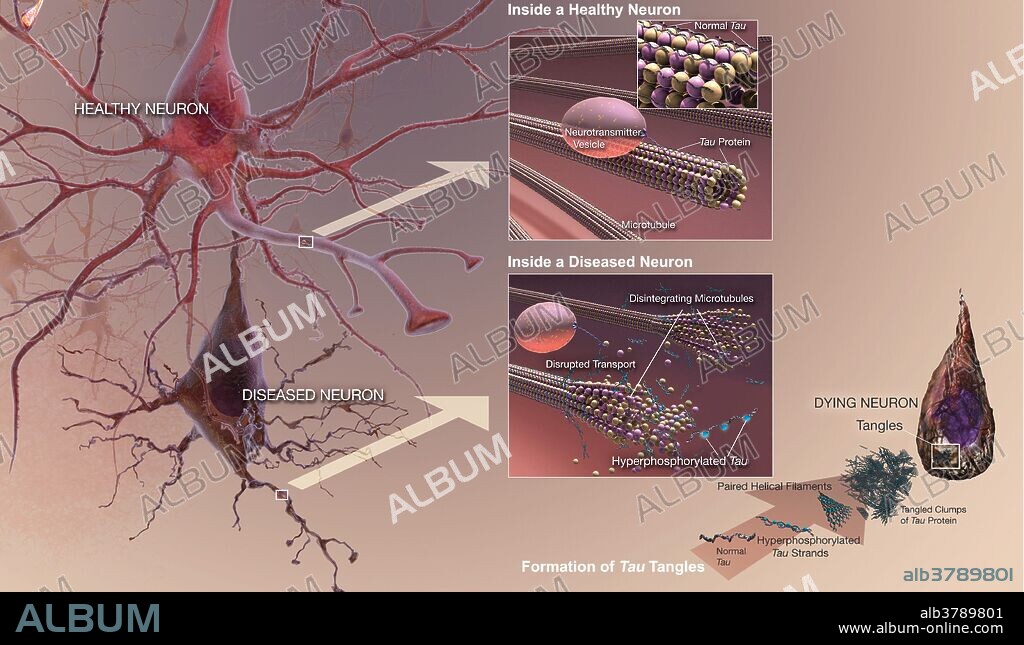alb3789801
Alzheimer's Disease, Neurofibrillary Tangles

|
Ajouter à une autre Lightbox |
|
Ajouter à une autre Lightbox |



Avez-vous déjà un compte? S'identifier
Vous n'avez pas de compte ? S'inscrire
Acheter cette image.
Sélectionnez l'usage:

Titre:
Alzheimer's Disease, Neurofibrillary Tangles
Légende:
Voir la traduction automatique
Neurofibrillary Tangles (NFTs) are aggregates of hyperphosphorylated tau protein that are most commonly known as a primary marker of Alzheimer's disease. Alzheimer's disease (AD), also known as Alzheimer disease, or just Alzheimer's, accounts for 60% to 70% of cases of dementia. It is a chronic neurodegenerative disease that usually starts slowly and gets worse over time. The most common early symptom is difficulty in remembering recent events (short-term memory loss). As the disease advances, symptoms can include problems with language, disorientation (including easily getting lost), mood swings, loss of motivation, not managing self care, and behavioral issues. As a person's condition declines, they often withdraw from family and society. Gradually, bodily functions are lost, ultimately leading to death. Although the speed of progression can vary, the average life expectancy following diagnosis is three to nine years. About 70% of the risk is believed to be genetic with many genes usually involved.
Crédit:
Album / Science Source / National Institute on Aging/NIH
Autorisations:
Modèle: Non - Propriété: Non
Questions sur les droits?
Questions sur les droits?
Taille de l'image:
4928 x 2850 px | 40.2 MB
Taille d'impression:
41.7 x 24.1 cm | 16.4 x 9.5 in (300 dpi)
Mots clés:
21E SIECLE • ALZHEIMER • ART CONCEPTUEL • DESORDRE • GRAPHIQUE • ILLUSTRATION • INSALUBRE • NEUROLOGIE • XXIE SIECLE
 Pinterest
Pinterest Twitter
Twitter Facebook
Facebook Copier le lien
Copier le lien Email
Email
